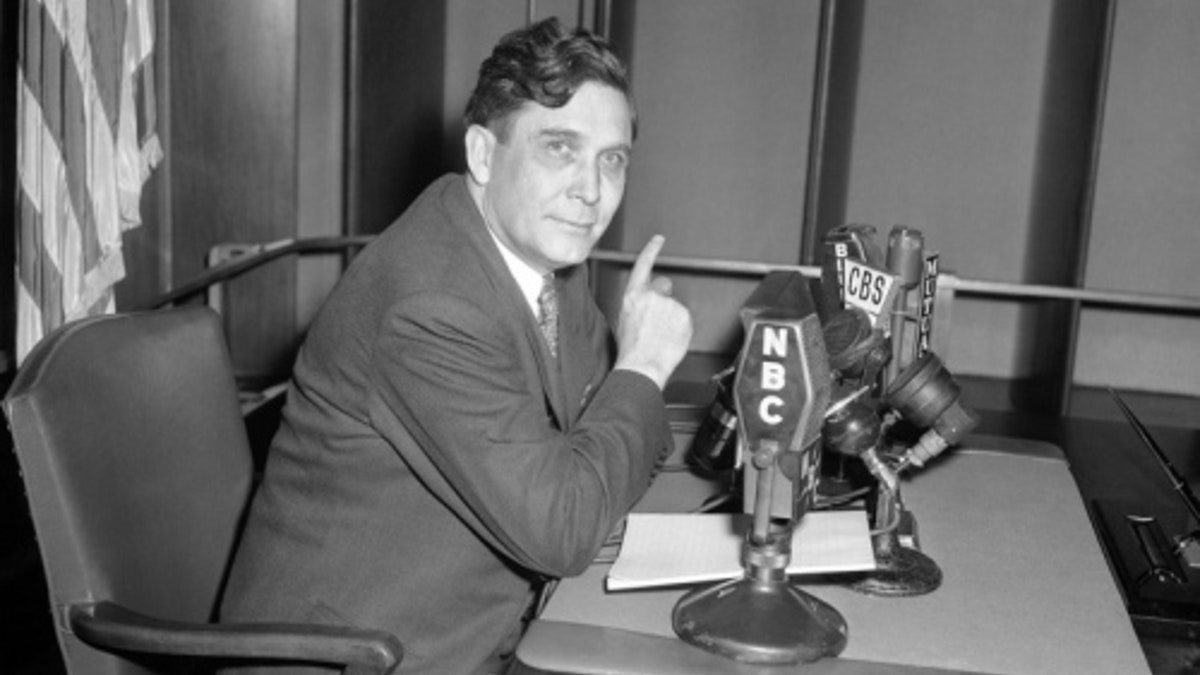
Wendell Lewis Willkie, GOP nominee for president in 1940. (AP)
FDR had dominated American politics for most of the 1930s, but Republicans had high hopes for the 1940 presidential election. Conventional wisdom was that Roosevelt would not try to buck public sentiment by seeking an unprecedented third term and that the Democratic presidential battle would leave that party divided and dispirited.
So the GOP field was large and eager. Two young and attractive candidates sat atop the list. The frontrunner was the 38-year old Manhattan District Attorney Thomas Dewey, armed with a well-deserved reputation for crime fighting, and Ohio’s 50-year old junior senator, Robert A. Taft. They were joined by one of the Senate’s leading isolationists, Michigan's Arthur Vandenberg, and more than half a dozen favorite sons and minor candidates.
One of those might have appeared to be Indiana native and power company executive Wendell Willkie, who was apparently still registered as a Democrat in February and polling at 3 percent in May, just weeks before Republicans gathered in Philadelphia June 24.
But Willkie was the beneficiary of a gigantic grassroots draft movement orchestrated by Fortune magazine's managing editor, Russell Davenport, and other powerful newspaper and magazine publishers eager for a businessman candidate with internationalist views on foreign policy.
A respected Republican National Committee member, Connecticut’s committeeman, Sam Pryor, Jr. also helped Willkie. An entrepreneur and financier, Pryor had heard Willkie eviscerate deputy Attorney General Robert Jackson in a national radio debate. Intrigued, he invited Willkie to speak at the 100th anniversary of Christ Church in Greenwich and shortly after began promoting the Hoosier to his wide circle of political friends.
Then fate intervened. In mid-May, Oregon committeeman Ralph Williams died of a massive stroke at a meeting of the RNC Arrangements Committee in Philadelphia. Pryor succeeded him, giving him the ability to affect the convention in a profound way.
Dewey led on the first ballot with 306, followed by Taft at 189 and Willkie at 105. Vandenberg was next with 76, followed by Pennsylvania’s favorite son, Gov. Arthur James at 74. The remaining 346 delegates were split among eight others.
Then on the second ballot, Dewey dropped to 338 while Taft rose to 203 and Willkie jumped to 171, with 288 to the remaining candidates. Dewey’s decline was not good news for the candidate: it’s hard for a frontrunner to regain momentum once it was lost.
Dewey’s decline was no accident. Pryor had worked a split in the New York City Republican Party to hide Willkie supporters in Dewey’s first ballot total and began pulling them and others out of Dewey and moving them to Willkie on the second.
He also arranged with Willkie supporters to back favorite sons, such as New York publisher Frank Gannett and Massachusetts congressman and GOP House leader Joe Martin, who was privately supporting Willkie.
Many of these hidden Willkie followers were from states late in the alphabetical roll call, so Pryor could arrange for Dewey to decline and Willkie to rise on successive ballots. By the end of the third ballot, Dewey had been bled down to 315, while Taft had risen to 212. But Willkie moved into second place with 259.
His rise was also added by the fact the galleries were packed with screaming Willkie supporters, who chanted their favorite’s name incessantly and filled the hall with screams, cheers and songs whenever his name was mentioned. As Arrangements Chairman, Pryor was in charge of distributing guest tickets. While he denied having packed the galleries when the leader of the Texas delegation accused him of doing so, Pryor’s denial was not credible. He knew the packed galleries could help stampede the delegates.
After the third ballot, Pryor met in a freight elevator behind the stage with Minnesota Gov. Harold Stassen, then 33-year old and the convention keynote speaker, and former Kansas Gov. and 1936 GOP presidential nominee, Alf Landon, and convinced the two men to throw their strength behind Willkie.
Dewey collapsed on the fourth ballot. On the next ballot, Landon’s Kansas and the rest of New York moved into the Willkie camp, narrowing the race to Willkie vs. Taft. A sixth ballot was called: Michigan moved en masse from Vandenberg to Willkie, followed by Pennsylvania, making the businessman and political novice the Republican nominee. It would be another 76 years before the GOP did this again.




















